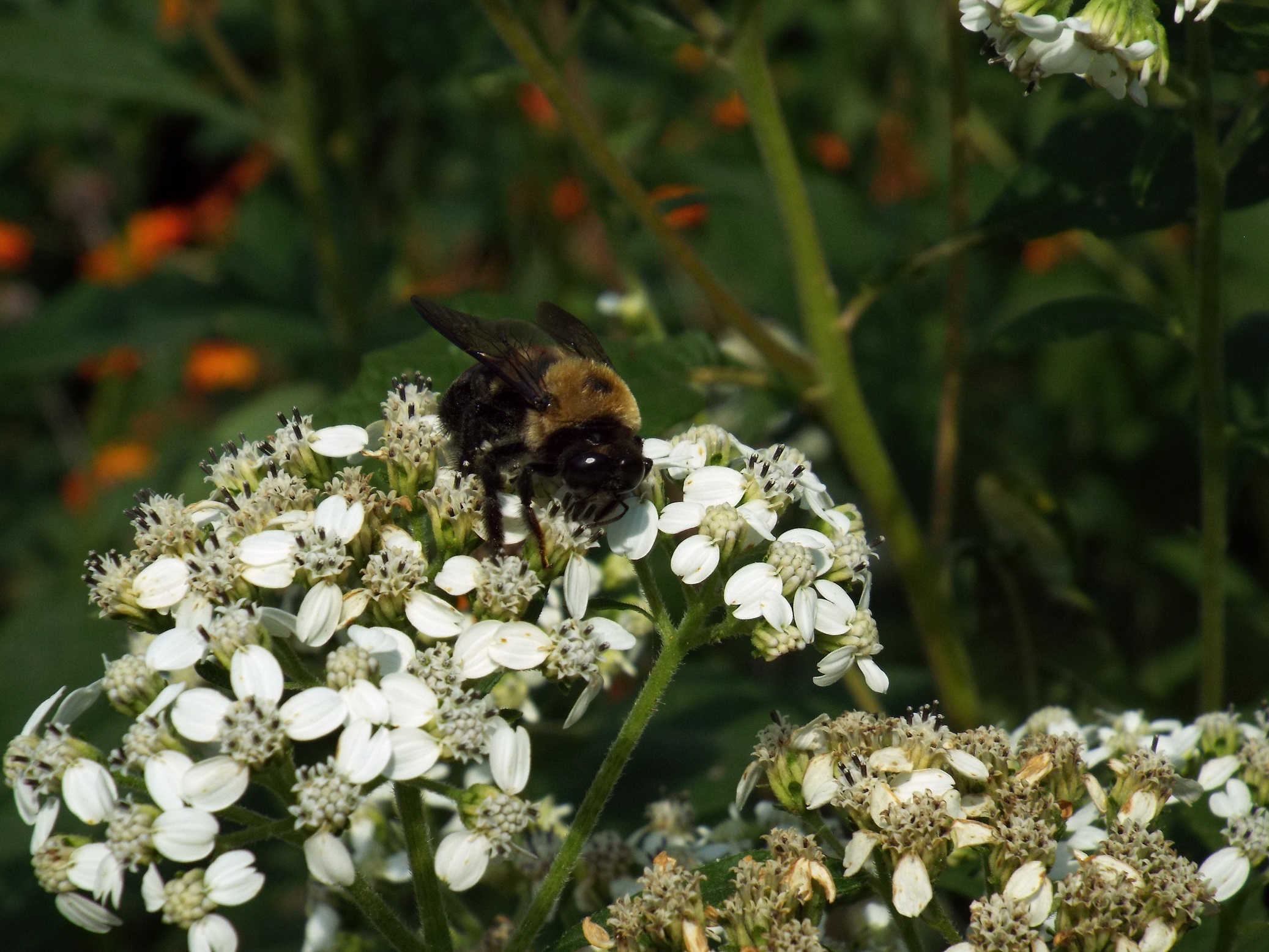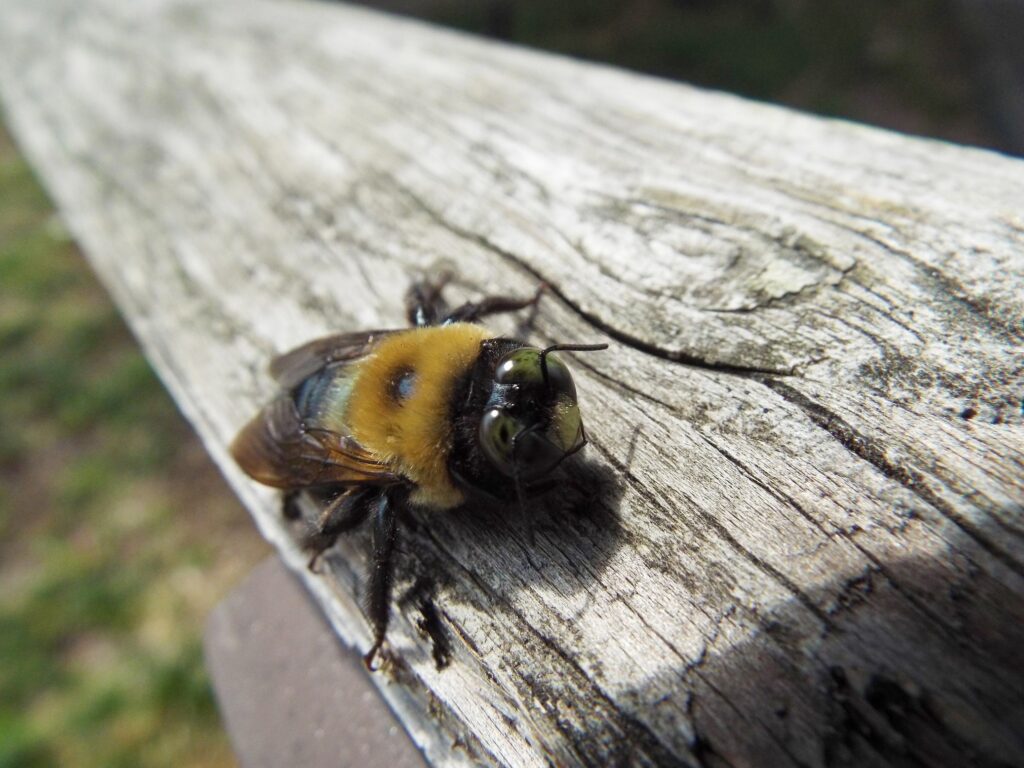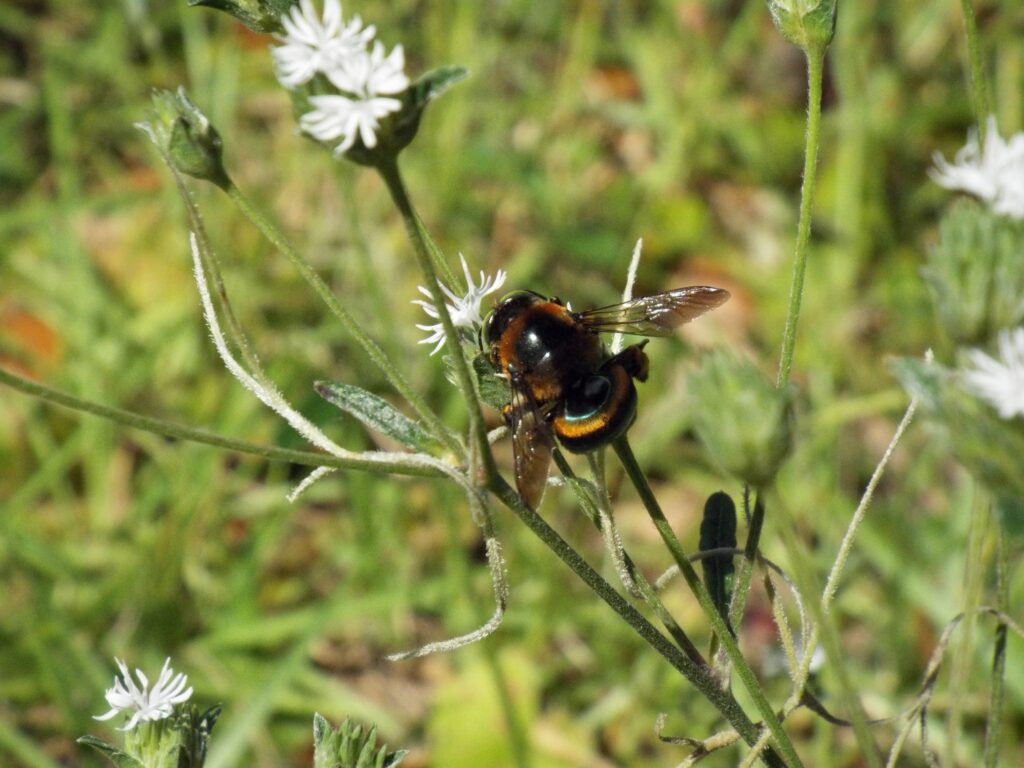




This week for Flora and Fauna Friday, I come to the defense of yet another insect with a bad rap. This week we’re learning about the Carpenter Bees, genus Xylocopa. In SC we have two species of Carpenter Bee: Eastern Carpenter Bee (Xylocopa virginica) and Southern Carpenter Bee (Xylocopa micans). The Eastern Carpenter Bee is by far the most common in our area.
Carpenter Bees get a bad rap because they hang around human structures harassing the occupants and chewing holes into wood. I’m not going to argue against the persecution they get for causing structural damage to human dwellings. (They’ve cost me a few Adirondack chairs and shovel handles in the past.) However, I will argue that they’re not a hazard to your health. They’re all bark and no bite. Or I should say, all bite and no sting.
The Carpenter Bees that hangs out beside your porch and buzz a foot in front of your face every time you leave the house are entirely harmless. That’s a male. Males of the insect order Hymenoptera (Bees, Ants, and Wasps) lack stingers. This order’s stinger is a modified ovipositor, or egg laying appendage. So only females have stingers. Male Carpenter Bees, which can be identified by the bright yellow square in the middle of their face, are territorial. The females spend days or even weeks carving out a larval tunnel in a block of wood and the males make certain no one bothers mate while she works. That’s why male Carpenter Bees get up in your business whenever you pass by their hidey-hole. Females aren’t territorial but they do sting. You’d have to squeeze one with your bare hand to get her to sting, but she can if she needs to. Females lay their eggs in the tunnels they carve. Each egg gets a nugget of “bee bread”, a mix of pollen and nectar, for food and their own divided cell made from wood pulp.
Eastern Carpenter Bees look a lot like Eastern Bumble Bees. The easiest way to tell them apart is by how fuzzy they are, especially at the base of the abdomen. Just like Bumble Bees, Carpenter Bees eat nectar and are important pollinators. Unlike some bee species, they’re active most of the year and hibernate in their tunnels over the winter. That makes them an important pollinator for many plant species throughout the year and a vital part of your local ecosystem.